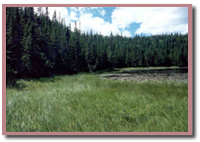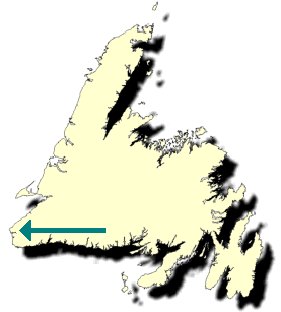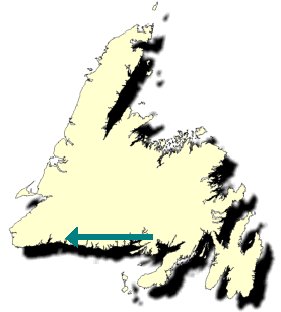
Grand Codroy Estuary

The Grand Codroy Estuary is surrounded by agricultural properties. Many of the landowners have signed Stewardship agreements with the province pledging to support wetland conservation in the Estuary and have agreed to govern their activities in and around the estuary so as not to knowingly harm wetlands and wildlife.
Objectives
To protect the important wetlands of the Grand Codroy Estuary. To promote a greater appreciation of wetlands and wetland values.
Benefits
The maintenance of healthy populations of waterfowl, other species and water quality. Opportunities for canoeing, hiking, photography, birdwatching, and hunting. Opportunity to learn more about nature, especially wetlands and waterfowl conservation.
Wetlands of International Importance
The wetlands of the Grand Codroy Estuary are biologically rich and support a diversity of wildlife including the endangered Piping Plover as well as species rare to Newfoundland such as the Great Blue Heron and the Ruby-throated Hummingbird. The area is particularly important for waterfowl and is regularly used for spring and fall staging by populations from the island of Newfoundland and from Labrador. Protection of these food rich staging areas is vital to waterfowl conservation. Spring staging occurs as waterfowl are completing their long northward migration from their wintering grounds. In these food rich areas they feed to replenish their energy reserves. Many birds remain in the area throughout the summer to nest and raise their young whereas others continue on to other breeding areas. In the fall waterfowl will gather in these feeding areas once again to build up their energy reserves in preparation for the return migration to their wintering grounds. The importance of this area to wildlife was recognized in 1987 when the area was declared a Wetland of International Importance under the Ramsar Convention.
Community Action
The Codroy Valley Area Development Association has been very active in the protection of their wetlands but also recognize their value as a tourism resource. The association has been very careful not to infringe on the integrity of the wetlands while developing the infrastructure required to support tourism initiatives.
Grand Codroy Estuary Wetlands Interpretation Center and Trail
A major project of the Development Association has been the construction of an interpretive trail running the length of the estuary. The route of the trail has been designed not to be obtrusive but will allow enhanced viewing opportunities of the local wildlife. Local cooperation has been outstanding for the project, with landowners allowing access through their properties. The next step is the construction of a wetlands interpretation center. This center will provide information and displays about the Codroy Valley area, the wetlands and the associated wildlife.
Burgeo

Many residents of Burgeo have cabins situated around the Big Barasway, a significant feeding area for waterfowl and shorebirds. Many of the cabin owners have signed Stewardship agreements with the province pledging to support wetland conservation in the Big Barasway and have agreed to govern their activities in and around the estuary so as not to knowingly harm wetlands and wildlife.
Objectives
To protect and conserve the important feeding and staging habitat of the Big Barasway. To increase wildlife use of the area. To promote a greater appreciation of wetlands and wetland values.
Benefits
The maintenance of healthy populations of waterfowl, other species and water quality. Opportunities for canoeing, hiking, photography, birdwatching, and hunting. Opportunity to learn more about nature, especially wetlands and waterfowl conservation.
Big Barasway
The extensive mud flats and eel grass beds along the east side of the Big Barasway provides important spring and fall staging habitat for a variety of species of waterfowl and shorebirds. Protection of such food-rich staging areas as this one is vital to waterfowl conservation. Spring staging occurs as waterfowl are completing their long northern migration from their wintering grounds. They stop at sites like this to feed thus replenishing their energy reserves. From these areas most of the birds move inland to the breeding grounds where they will nest and rear their young. In the fall they will gather in these feeding areas once again to build up their energy reserves in preparation for the return migration to their wintering grounds. The barasway is also recognized as an important nesting site for the endangered Piping Plover.
